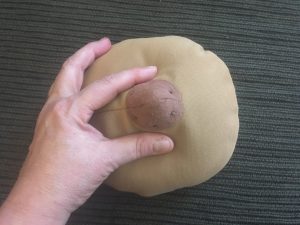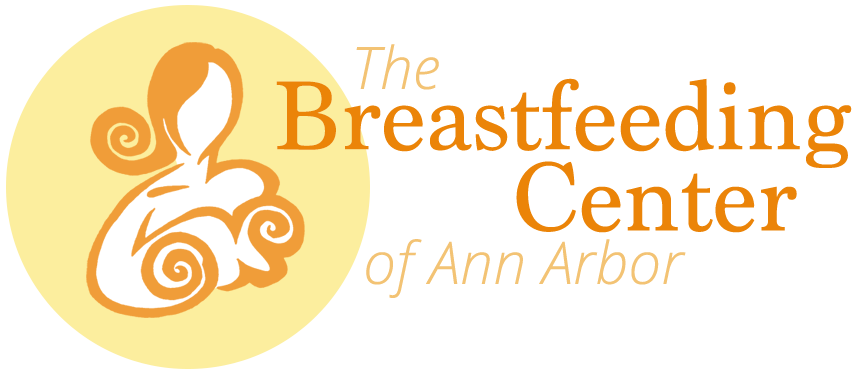Right now in Michigan we are experiencing a crisis in formula availability. This is leading many families to think about the idea of “relactation” so they can rely on their bodies instead of outside resources. This often comes from a “Desire to have a safe way to feed an infant during uncertain times, such as emergencies from natural disasters or disease outbreaks.” Right now families in Michigan are often scrambling to find sources to obtain formula. Not knowing where your child’s next meal is coming from is very scary.
Relactation is when you have given birth within the recent past (a few days to a year) but are now not breast/chestfeeding. According to the CDC “Relactation is the process by which a parent reestablishes lactation after having stopped for some time (weeks or months).”
 How do you do this? What is the process?
How do you do this? What is the process?
The process is fairly simple, reactivating the biological system that is already in your body.
Depending on how long ago you weaned, how much breastmilk you had when you weaned, or if you ever brought in a full breastmilk supply are all factors on how easy it will be to get your breastmilk supply ramped up again. At the end of this blog there will be many resources for you that all have a bit of a different twist. Different ideas are always nice to have.
How long will this take?
This is tricky because some parents can get their milk supplies ramped up pretty quickly (in a few weeks) but others may need longer. This is why working with a lactation support person is important. Getting skilled help greatly increases the odds that this will go well. According to the World Health Organization relactation takes a strong desire on the parent’s part to put in the time and energy needed and a lot of nipple stimulation.
Here are the basics:
1. Focus on breastmilk removal and breast/chest stimulation. Lactation relies on a supply and demand theory. The more stimulation, the more breastmilk removed from the breast/chest, the more the milk the body will make.
 Frequent milk removal while stimulating the nipples can be done by directly putting the baby to the breast, using hand expression, or pumping. At first you will not see much milk. Be patient! You are “placing your order” for more milk. Putting the baby to the breast for little snacks frequently can be a very effective way of helping to increase your milk supply. Babies suck on pacifiers all the time and don’t get food. Help your body be your baby’s pacifier.
Frequent milk removal while stimulating the nipples can be done by directly putting the baby to the breast, using hand expression, or pumping. At first you will not see much milk. Be patient! You are “placing your order” for more milk. Putting the baby to the breast for little snacks frequently can be a very effective way of helping to increase your milk supply. Babies suck on pacifiers all the time and don’t get food. Help your body be your baby’s pacifier.
Consider adding frequent, short sessions (maybe 5-10 minutes but every 1-2 hours during the day and every 3 hours at night) of hand expression and pumping is often helpful, and if your baby is not cooperating with latching, necessary to increase your rate of milk production.
2. If possible, work closely with lactation support. They will help make sure the baby is gaining weight well while you make these changes and be able to offer help with latching and positioning as well as guidance for supplementation.
3. Take care of yourself. Eat some extra calories. Foods that are great for this are protein, healthy fats, and foods rich in fiber. Drink to thirst. And, if possible, try to get some extra rest while you are focusing your energy on bringing back your milk supply.
Pretty straight forward!
Here are more resources for relactation:
Kellymom.com: https://kellymom.com/ages/adopt-relactate/relactation-resources/
UNECEF: https://www.unicef.org.uk/babyfriendly/maximising-breastmilk-and-re-lactation-guidance/
WHO: https://apps.who.int/iris/bitstream/handle/10665/65020/WHO_CHS_CAH_98.14.pdf?sequence=1&isAllowed=y
La Leche League: https://www.llli.org/breastfeeding-info/relactation/
Australian Breastfeeding Association: https://www.breastfeeding.asn.au/bfinfo/relactation-and-induced-lactation
Hand expression resources:
Jane Morton: https://firstdroplets.com/
Maya Bolman: https://vimeo.com/65196007
